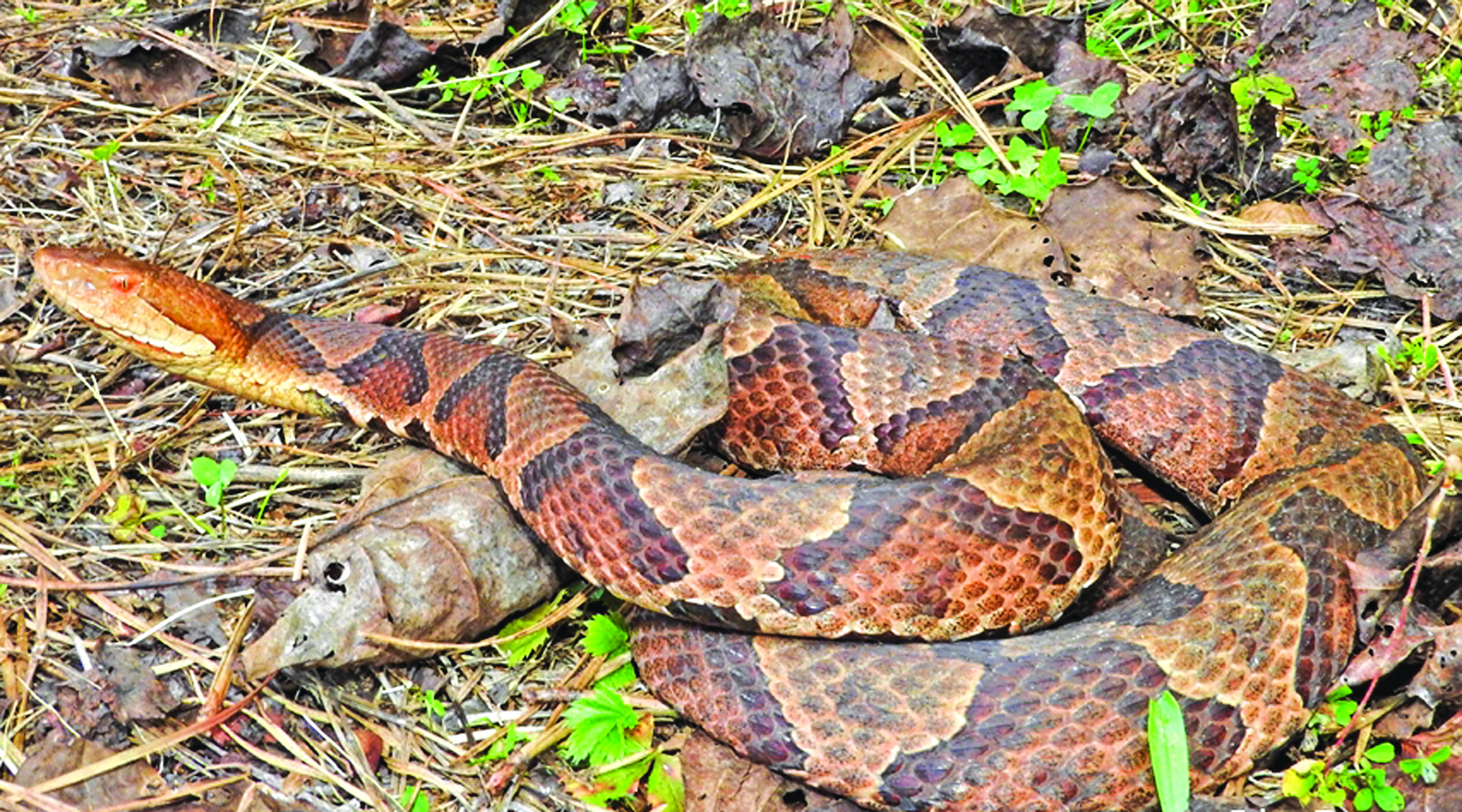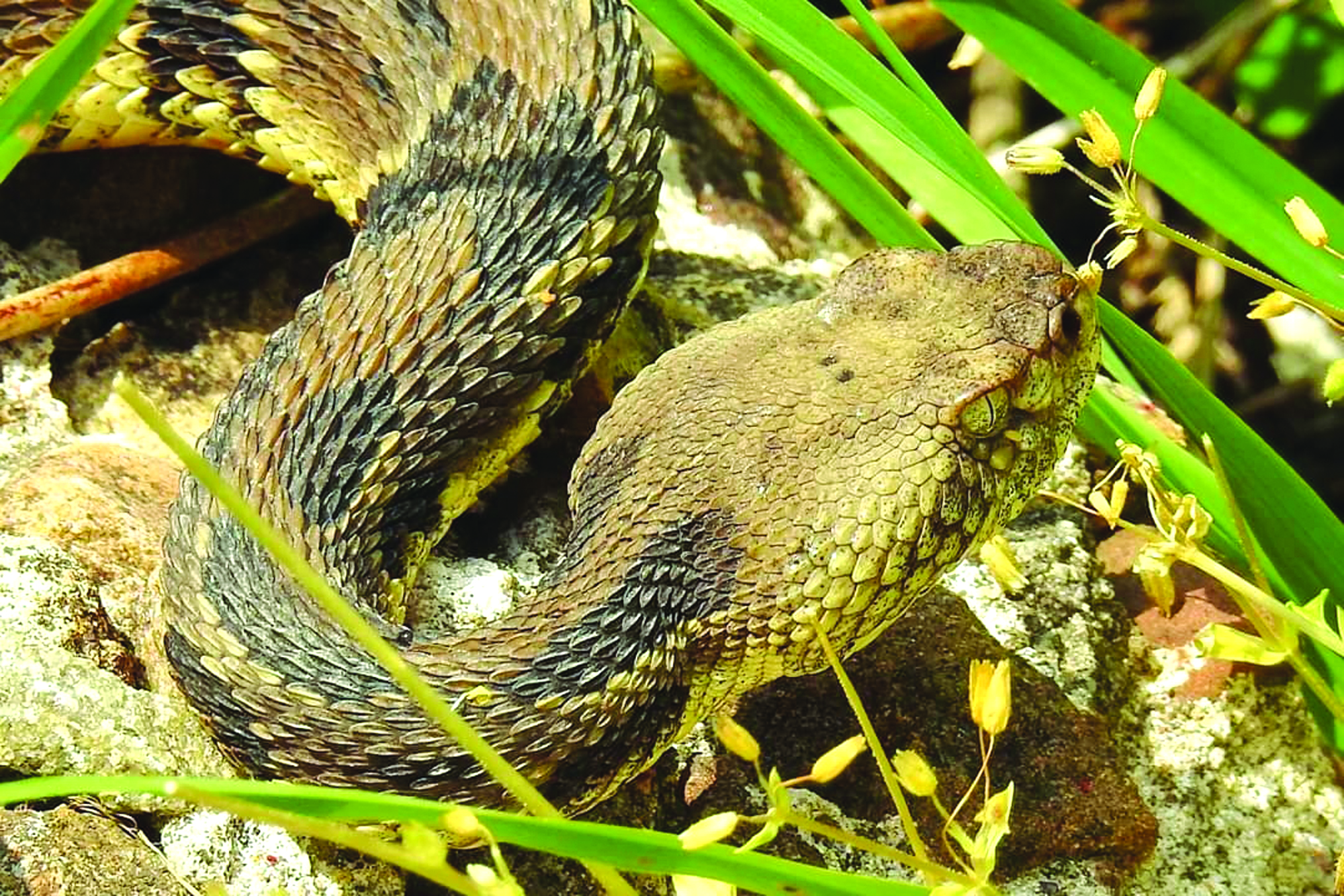East Tennessee Outdoors: Snakes!!
Published 6:00 am Saturday, June 29, 2019



BY DANNY BLEVINS
STAR CORRESPONDENT
Snakes. The very word brings to mind the Biblical Garden of Eden and all the trouble the serpent caused.
To be perfectly honest, I hate snakes but I do realize the importance of the snake in wildlife habitat.
Without snakes, we would be overrun with mice, moles, chipmunks, voles, rats, rabbits and a hundred other small creatures that call the forest home.
Snakes serve a purpose, even the deadly ones.
Tennessee has 32 types of snakes and four types of venomous snakes: the timber rattlesnake, the northern and southern copperhead, and the pygmy rattlesnake.
Of these four, northeast Tennessee only has two – the timber rattlesnake and the southern copperhead. The timber rattlesnake is more venomous than the copperhead, but both have bites that can be lethal.
According to statistics, there have only been four deaths in the state of Tennessee caused by venomous snakes since 1960.
Let me repeat that – snakes have only killed four people in Tennessee in the last 59 years!
Venomous snakes are not waiting around every turn of a hiking trail or under every log so they can bite us and kill us.
In fact, venomous snakes don’t like to strike us because they are saving their venom for prey animals such as mice, squirrels, etc.
Most snake bites occur when someone sees the snake and tries to kill it or tries to handle it.
The best advice I can give outdoorsmen and women is to leave a snake alone when you see one.
Walk around it and go on about your business and they will theirs. Just remember, it is illegal to kill any species of snake in the state of Tennessee.
The timber rattler can be found usually in open timber and on sunny hillsides.
The copperhead is more apt to be around water, and they love rocky outcrops.
Both of these venomous snakes also love to hide in old abandon houses, barns, or sheds, or they like to live under pieces of tin, in lumber piles, in logs, or wood piles.
These places offer shade in the heat of the day, and they also provide prey.
The timber rattler can grow to six feet long, but the copperhead will usually be three feet or less in length.
Both are pit vipers because they use heat-sensing pits behind their eyes to detect their prey
Of the two, the more deadly is the timber rattler. This snake will often warn an intruder of an impending strike by rattling, but it does not have to do this.
Some strikes occur before the person even knows the snake was there.
The copperhead, on the other hand, is not as dangerous as the rattlesnake, but it can still be deadly.
They are a copper color with clearly distinct pits on the side of its head behind the eyes.
A common water snake is often mistaken for the copperhead, but if you look closely, you will see that the water snake has a more rounded head while the copperhead has a flat head.
The simple truth is that if you go hiking, hunting, fishing, or birdwatching enough in east Tennessee, you will probably see a snake, but the odds of seeing a venomous snake is very slim.
If you do hike in known snake territory, watch where you put your hand, watch where you step, and part the grass with a walking stick before you walk through it.
This will go a long way in making sure you don’t surprise one of these creatures.
But what do you do if you are bitten by one of these snakes?
If you are bitten, do not try to bleed the bite, or suck the venom out, but always remain calm and get to help.
Most hospitals have anti-venom, and this is your best chance to avoid damage to the tissue around the bitten area.
I admit it, I hate snakes, but they do serve a purpose in our woods, forest and fields.
Don’t let the fear of these slithery creatures keep you from enjoying what you love – the East Tennessee wilderness.








